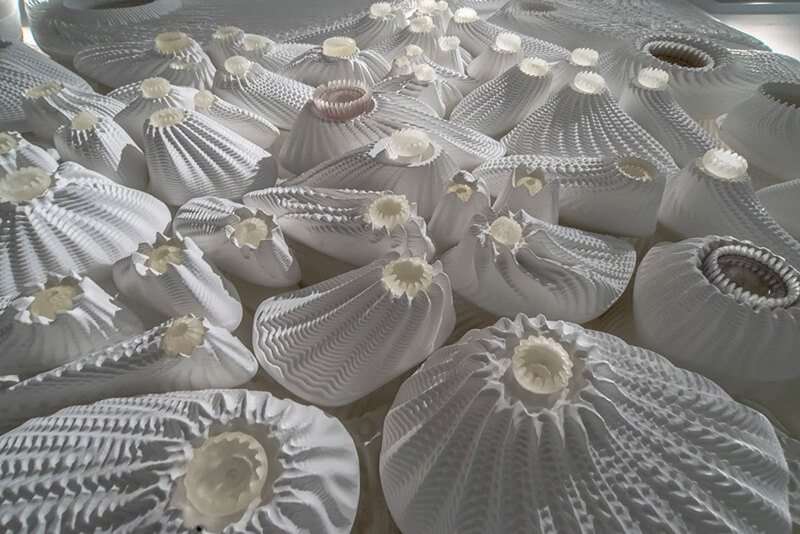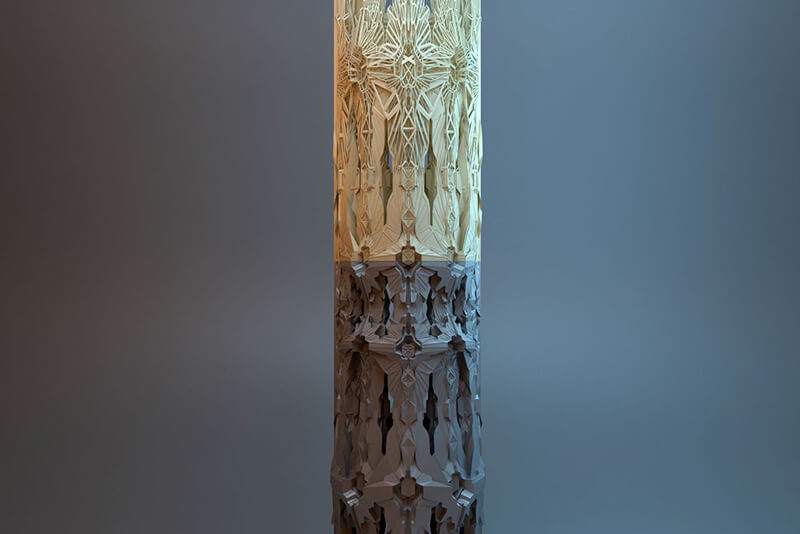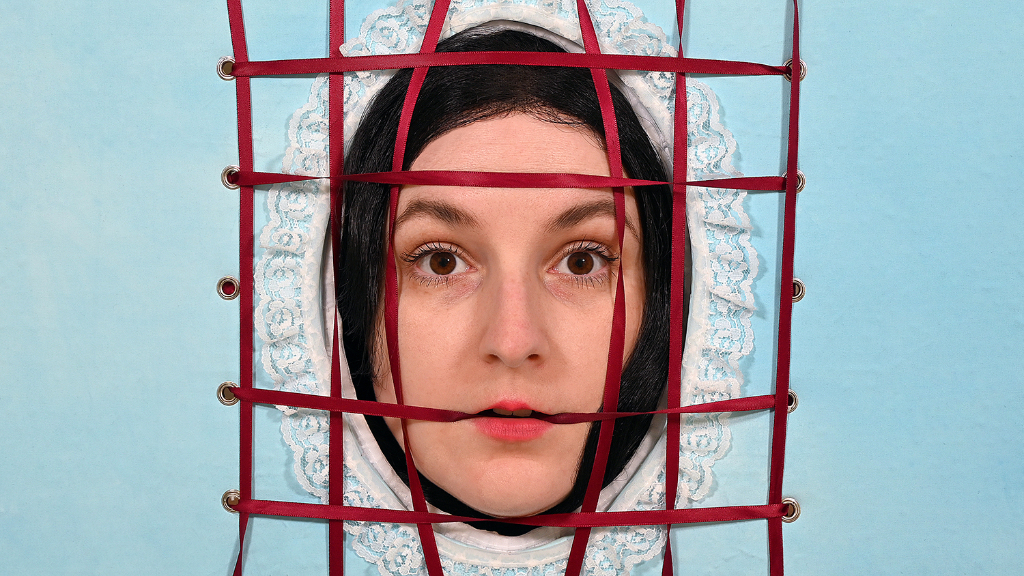Interview by Bilge Hasdemir

Richard Beckett is a London-based architect and designer, and co-founder of BiotA Lab and Syn.De.Bio (Synthetic Design Biotopes), where his creativity has been nourished with cross-disciplinary projects conducted in collaboration with practitioners of different fields. His projects are as diverse and multidisciplinary as his training in physiology, biochemistry and architecture.
A key aspect of his design practice is the convergence of different realms which challenges the aesthetics and constructive methods of human structures and objects. Combining different disciplinary perspectives, each of Becket’s works reveals different modes of creative inquiry into a new sense of materiality, new hybrid technologies and unprecedented living forms that are being integrated into our contemporary built environment.
He was also one of the attendees of the BIOFABRICATE Summit 2017, the annual summit for the emerging world of grown materials, and gave a fascinating talk about his novel design strategies in bio-receptive architecture research. Biology is one of the significant inspiring sources of his design products by which he invites us to learn from biological processes, their complexities and diversities. He designs with and for nature at the intersection of art, science and architecture. The projects invite us to rethink the design practice with its potential as well.
Beckett is mainly using bioreception and biofabrication methods and opening up possibilities of better futures by also showing aesthetic properties of living matters in fabulous ways. Bioreceptive Façade Panels is one of his research projects dealing with the notion of living architecture. By designing nature-inspired panels from algae, lichens, and mosses, Beckett provides sustainable solutions for the planet’s future.
Vegetative cover of the building colonised by microorganisms shows us how nature responds to certain environmental and material changes. Outdoor panels seem to challenge the stability of architecture with the flow of nature. In this line, negative and cultural connotations of a micro-organismic green surface are replaced by positive and natural connotations. The proposed panels thus provide alternative environmental and healthy solutions towards an ecological and sustainable architecture which is in a sensual format aesthetic level as well.
Beckett’s engagement with three-dimensional materials also brings fascinating outcomes. By tracing multidisciplinary efforts for his series of 3D Printed Fabrics, he combines flexible textile structures with architectural applications. The works introduce new and complex 3D considerations to traditional knitwear techniques.
Among the projects utilising from possibilities of 3D printing, new expressions of material and form capture the attention, as in Stela and Helico. Amazing installation Algae Cellunoi is another collaborative work of Beckett in which the 3D printed surface manifests a potential for a transformation through algae growth. The dynamism on the surface expression includes a response to environmental stimuli and looks like creating its ecology.
Becket’s projects reconnect humans and nature. In the interest of better human and planetary health, it is essential to highlight the reciprocal relationship between humans and nature first. This is what Beckett has been doing. His projects are evocative of our symbiotic relationship with nature. And his hybrid approach leads us to an ecosophical perspective which sounds promising for better futures.


You started your career as an R&D scientist for the pharmaceutical giant GlaxoSmithKline. How did you make the transition from biochemistry to architecture?
After working in R&D at GSK for four years, I made the decision to change career and went on to study Architecture, firstly at The University of Westminster for my undergraduate degree and then at The Bartlett for my Part II/Masters.
I had some nervous moments early on after the change, primarily due to the different ways of working between the sciences and arts, but it always felt inherently like I had made the right choice. I found the transition easier by the time I was doing my part II and started to develop ways to integrate some of the methodological approaches from my science background with architectural design – a hybrid approach which I see as essential now in dealing with the notion of living or semi-living architecture.
Looking at your work for Pringle of Scotland and Alga(e)zebo for the London Olympics, it is clear your work requires collaboration across a wide range of disciplines. How do your projects typically being — is it the idea, the team, or something else entirely?
Most of my projects have been cross-disciplinary, I enjoy working with people from different disciplines as I have found that the questions that arise through conversation and the problems that need to be solved are more interesting and far less linear than when working with people in the same field. This leads to novel design strategies and more interesting outcomes.
In the project Niches for Organic Territories in Bio Augmented Design (NOTBAD), you bring biology’s current fascination with the microbiome into consideration of the built environment. What cultural obstacles have you had to overcome in building design and aesthetics when taking into consideration the microbiome?
Predominantly, people are inherently fearful of microbes – bacteria in particular, especially when we perceive ourselves to be exposed to or in close proximity to them. Proposing to grow microbes on and in our buildings purposely challenges these inner fears that all microbes are bad and will lead to illness. Western cultures, in particular, still have an obsession with cleanliness.
This goes beyond notions of hygiene and clean kitchens. It is embedded in our approach to design and drives the current preference towards aesthetics of cleanliness. We are in a time where we are obsessed that our buildings should look clean, not only when they are new but for their lifetime.
Even within the first two years of a building’s life, huge amounts of money are spent on cleaning the outsides of buildings to remove any signs of weathering or ageing to maintain this pseudo-sterile aesthetic.
In the NOTBAD project, we are exploring the fact that not all microbes are bad and that some are essential and possibly beneficial for our health. By proposing to cultivate these good microbes in our buildings, we are exploring an architecture that is not glossy and pure but that is porous, permeable and inherently supportive of microbial growth.
BIOFABRICATE is the annual summit for the emerging world of grown materials held in New York City. What impact do you think the conference is going to have on the future of materials?
I always feel enthused and more confident about working in this area when coming away from the conference, and so I feel that if it can encourage others too to start to explore these areas within their specific fields, that will be the way that the design community as a whole can make fundamental changes in the way we use our resources for material application towards more sustainable, healthy and interesting solutions.
It would be nice to see a change too away from the existing “materials library” approach whereby designers will select materials from a catalogue or showroom to one where designers might start to specify particular material properties they require and then approach material scientists or biologists etc. to make, synthesise or potentially grow these materials as an alternative what already exists.
What is your chief enemy of creativity?
Facebook.
You couldn’t live without…
Caffeine, at least until my youngest starts sleeping through the night.






